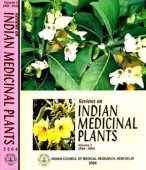Anana, Ānana, Ānanā, Ananā, Anaṇa, Āṅana: 27 definitions
Introduction:
Anana means something in Buddhism, Pali, Hinduism, Sanskrit, Jainism, Prakrit, Marathi, Hindi, biology. If you want to know the exact meaning, history, etymology or English translation of this term then check out the descriptions on this page. Add your comment or reference to a book if you want to contribute to this summary article.
In Hinduism
Ayurveda (science of life)
Source: gurumukhi.ru: Ayurveda glossary of termsĀnana (आनन):—[ānanam] Face

Āyurveda (आयुर्वेद, ayurveda) is a branch of Indian science dealing with medicine, herbalism, taxology, anatomy, surgery, alchemy and related topics. Traditional practice of Āyurveda in ancient India dates back to at least the first millenium BC. Literature is commonly written in Sanskrit using various poetic metres.
Jyotisha (astronomy and astrology)
Source: Wisdom Library: Brihat Samhita by VarahamihiraĀnana (आनन) refers to the “head”, according to the Bṛhatsaṃhitā (chapter 5), an encyclopedic Sanskrit work written by Varāhamihira mainly focusing on the science of ancient Indian astronomy astronomy (Jyotiṣa).—Accordingly, “[...] Now, if [Rāhu] has a body or be simply a head with a regular motion in the ecliptic, how comes it that he eclipses the sun and moon when they are 180° from him? If his motion be not subject to fixed laws, how comes it that his exact place is ascertained; how comes it that he never eclipses by the part of his body between his head and tail [i.e., puccha-ānana]? If being of the shape of a serpent he eclipses with his head or with his tail, how comes it that he does not hide one half of the heavens lying between his head and tail?”.

Jyotisha (ज्योतिष, jyotiṣa or jyotish) refers to ‘astronomy’ or “Vedic astrology” and represents the fifth of the six Vedangas (additional sciences to be studied along with the Vedas). Jyotisha concerns itself with the study and prediction of the movements of celestial bodies, in order to calculate the auspicious time for rituals and ceremonies.
Shaktism (Shakta philosophy)
Source: Google Books: Manthanabhairavatantram1) Ānana (आनन) refers to the “face”, according to the Manthānabhairavatantra, a vast sprawling work that belongs to a corpus of Tantric texts concerned with the worship of the goddess Kubjikā.—Accordingly, “He has eight faces and, very powerful, shines like a white lotus. He is mightily proud and has sharp teeth and great body. He is terrible and fierce and his face is deformed [i.e., vikṛta-ānana]. O Śambhu, he has twenty arms and the goddess sits on his lap. He holds a sword, mallet and noose, a double-headed drum, a dagger, the Kaustubha jewel, a rosary, a skull bowl full of fruit and the like and a piece of human flesh. [...]”.
2) Ananā (अनना) refers to one of the thirty-two Bhairavīs (also Dūtis) embodying the syllables of the goddess’s Vidyā, according to the Manthānabhairavatantra.—The thirty-two Bhairavīs [i.e., Ananā] are the consorts of the Bhairavas presiding over the sonic energies of the thirty-two syllables of her Vidyā.

Shakta (शाक्त, śākta) or Shaktism (śāktism) represents a tradition of Hinduism where the Goddess (Devi) is revered and worshipped. Shakta literature includes a range of scriptures, including various Agamas and Tantras, although its roots may be traced back to the Vedas.
Purana and Itihasa (epic history)
Source: archive.org: Shiva Purana - English TranslationĀnanā (आनना) refers to a “face”, according to the Śivapurāṇa 2.3.8.—Accordingly, as Brahmā narrated to Sage Nārada:—“O sage, all these details you mentioned to the lord of mountains. You told the previous history of Pārvatī that increased her pleasure and on hearing which, the lord of mountains, his wife and children were freed from all suspicions. On hearing the story from Nārada, Pārvatī bent down her head in bashfulness but her smile heightened [i.e., ānanā] the beauty of her face. [...]”.

The Purana (पुराण, purāṇas) refers to Sanskrit literature preserving ancient India’s vast cultural history, including historical legends, religious ceremonies, various arts and sciences. The eighteen mahapuranas total over 400,000 shlokas (metrical couplets) and date to at least several centuries BCE.
Shaivism (Shaiva philosophy)
Source: SOAS University of London: Protective Rites in the Netra TantraĀnana (आनन) refers to the “mouth”, according to the Netratantra of Kṣemarāja: a Śaiva text from the 9th century in which Śiva (Bhairava) teaches Pārvatī topics such as metaphysics, cosmology, and soteriology.—Accordingly, [verse 9.19cd-26, while instructing to visualize Sadāśiva in order to worship the formless Amṛteśa]—“[He] resembles the swelling moon, a heap of mountain snow. [...] [Sadāśiva has] a shield, a mirror, a bow, a citron tree, and a water jar. At his head is a half moon. [He who meditates of Sadāśiva] should perceive the Eastern face as yellow; the Southern a wrathful, terrible black [that has] an unnatural, tusked mouth (vikṛta-ānana—daṃṣṭralaṃ vikṛtānanam). [...]”.

Shaiva (शैव, śaiva) or Shaivism (śaivism) represents a tradition of Hinduism worshiping Shiva as the supreme being. Closely related to Shaktism, Shaiva literature includes a range of scriptures, including Tantras, while the root of this tradition may be traced back to the ancient Vedas.
In Buddhism
Tibetan Buddhism (Vajrayana or tantric Buddhism)
Source: Brill: Śaivism and the Tantric Traditions (tantric Buddhism)Ānana (आनन) or Mukha refers to the “face”, according to the Nāmamantrārthāvalokinī by Vilāsavajra, which is a commentary on the Nāmasaṃgīti.—Accordingly, [while describing Ādibuddha]—“[...] [The Ādibuddha] has five faces (pañcan-ānana > pañcan-mukha). [He also] has five crests—in other words, five hair-braids. It is through tying up those [hair-braids that he] has a crown of five hair-braids. [His five faces] have five [different] colours: dark blue for the east [and forward-facing face], yellow for the south, red for the west, [and] green for the north. [...]”.
Source: OSU Press: Cakrasamvara SamadhiĀnana (आनन) refers to a “face”, according to the Cakrasaṃvara Samādhi [i.e., Cakrasamvara Meditation] ritual often performed in combination with the Cakrasaṃvara Samādhi, which refers to the primary pūjā and sādhanā practice of Newah Mahāyāna-Vajrayāna Buddhists in Nepal.—Accordingly, “An enemy's lopped head! Pouring poison in the mouth, a sweet loose roar, Raised left above the jaws, in the most beautiful way, a face fixed in anger (ānana—krodhamūlānanāntā)”.

Tibetan Buddhism includes schools such as Nyingma, Kadampa, Kagyu and Gelug. Their primary canon of literature is divided in two broad categories: The Kangyur, which consists of Buddha’s words, and the Tengyur, which includes commentaries from various sources. Esotericism and tantra techniques (vajrayāna) are collected indepently.
In Jainism
General definition (in Jainism)
Source: academia.edu: Tessitori Collection IAnāṇa (अनाण) refers to the “negative knowledge” (of the Gods, Humans, Animals, etc.), as defined in the “Arhadvijñaptirūpā Vicāraṣaṭtriṃśikā” by Gajasāra, which is included in the collection of manuscripts at the ‘Vincenzo Joppi’ library, collected by Luigi Pio Tessitori during his visit to Rajasthan between 1914 and 1919.—The Vicāraṣaṭtriṃśikā (in Prakrit) was first presented in tabular form (yantra) according to the commentators, and then put in the form of a text. [...] Each category is then examined through twenty-four parameters [e.g., negative knowledge (anāṇa)].

Jainism is an Indian religion of Dharma whose doctrine revolves around harmlessness (ahimsa) towards every living being. The two major branches (Digambara and Svetambara) of Jainism stimulate self-control (or, shramana, ‘self-reliance’) and spiritual development through a path of peace for the soul to progess to the ultimate goal.
Biology (plants and animals)
Source: Google Books: CRC World Dictionary (Regional names)Anana in Angola is the name of a plant defined with Corchorus tridens in various botanical sources. This page contains potential references in Ayurveda, modern medicine, and other folk traditions or local practices It has the synonym Corchorus angustifolius Schumach. & Thonn..
Example references for further research on medicinal uses or toxicity (see latin names for full list):
· J. Palynol. (1980)
· Journal of Ethnopharmacology (1985)
· Mantissa Plantarum (1771)
If you are looking for specific details regarding Anana, for example side effects, extract dosage, health benefits, diet and recipes, chemical composition, pregnancy safety, have a look at these references.

This sections includes definitions from the five kingdoms of living things: Animals, Plants, Fungi, Protists and Monera. It will include both the official binomial nomenclature (scientific names usually in Latin) as well as regional spellings and variants.
Languages of India and abroad
Pali-English dictionary
Source: BuddhaSasana: Concise Pali-English Dictionaryanaṇa : (adj.) free of debt.
-- or --
ānana : (nt.) face; mouth.
Source: Sutta: The Pali Text Society's Pali-English DictionaryĀnana, (nt.) (Vedic āna, later Sk. ānana from an to breathe) the mouth; adj. (-°) having a mouth Sdhp.103; Pgdp 63 (vikaṭ°). (Page 100)

Pali is the language of the Tipiṭaka, which is the sacred canon of Theravāda Buddhism and contains much of the Buddha’s speech. Closeley related to Sanskrit, both languages are used interchangeably between religions.
Marathi-English dictionary
Source: DDSA: The Molesworth Marathi and English Dictionaryānana (आनन).—n (S) The mouth. Ex. vacana hēṃ nighatāṃ ṛṣi ānanīṃ || 2 The face.
Source: DDSA: The Aryabhusan school dictionary, Marathi-Englishānana (आनन).—n The mouth; the face.
Marathi is an Indo-European language having over 70 million native speakers people in (predominantly) Maharashtra India. Marathi, like many other Indo-Aryan languages, evolved from early forms of Prakrit, which itself is a subset of Sanskrit, one of the most ancient languages of the world.
Sanskrit dictionary
Source: DDSA: The practical Sanskrit-English dictionaryAnana (अनन).—a. [an lyuṭ] Act of breathing, living &c.
Derivable forms: ananam (अननम्).
--- OR ---
Ānana (आनन).—[ānityanena, ā-an karaṇe lyuṭ]
1) The mouth, face; R.3.3; नृपस्य कान्तं पिबतः सुताननम् (nṛpasya kāntaṃ pibataḥ sutānanam) 17.
2) A large division of a work, chapter, book &c. (e. g. the two ānanas of Rasagaṅgādhara.)
Derivable forms: ānanam (आननम्).
Source: Cologne Digital Sanskrit Dictionaries: Edgerton Buddhist Hybrid Sanskrit DictionaryAñāna (अञान).—(a-ñāna) (nt.; Pali añāṇa; MIndic for ajñāna, § 2.15), ignorance: jñānaṃ na kalpeti, añānu (n. sg.) no bhavet Mūla-madhyamaka-kārikā 157.1 (verse; no v.l.).
Source: Cologne Digital Sanskrit Dictionaries: Shabda-Sagara Sanskrit-English DictionaryĀnana (आनन).—n.
(-naṃ) The mouth, (and by syncope) the face. E. āṅa before ana to live or breathe, lyuṭa aff.
Source: Cologne Digital Sanskrit Dictionaries: Benfey Sanskrit-English DictionaryĀnana (आनन).—i. e. an + ana, n. 1. The mouth; the face, [Ṛtusaṃhāra] 6, 30. 2. A point, [Rāmāyaṇa] 6, 79, 69.
Source: Cologne Digital Sanskrit Dictionaries: Cappeller Sanskrit-English DictionaryĀnana (आनन).—[neuter] mouth, face.
Source: Cologne Digital Sanskrit Dictionaries: Monier-Williams Sanskrit-English Dictionary1) Anana (अनन):—[from an] n. breathing, living, [Nirukta, by Yāska]
2) Ānana (आनन):—[from āna] a n. the mouth
3) [v.s. ...] the face, [Rāmāyaṇa; Raghuvaṃśa] etc.
4) [v.s. ...] entrance, door, [cf. Lexicographers, esp. such as amarasiṃha, halāyudha, hemacandra, etc.]
5) b See under āna above.
Source: Cologne Digital Sanskrit Dictionaries: Goldstücker Sanskrit-English DictionaryAnana (अनन):—n.
(-nam) Breathing, living. E. an, kṛt aff. lyuṭ.
Source: Cologne Digital Sanskrit Dictionaries: Yates Sanskrit-English DictionaryĀnana (आनन):—[ā-nana] (naṃ) n. The mouth; the face.
Source: DDSA: Paia-sadda-mahannavo; a comprehensive Prakrit Hindi dictionary (S)Ānana (आनन) in the Sanskrit language is related to the Prakrit word: Āṇaṇa.
[Sanskrit to German]
Sanskrit, also spelled संस्कृतम् (saṃskṛtam), is an ancient language of India commonly seen as the grandmother of the Indo-European language family (even English!). Closely allied with Prakrit and Pali, Sanskrit is more exhaustive in both grammar and terms and has the most extensive collection of literature in the world, greatly surpassing its sister-languages Greek and Latin.
Hindi dictionary
Source: DDSA: A practical Hindi-English dictionaryĀnana (आनन) [Also spelled anan]:—(nm) face; mouth.
...
Prakrit-English dictionary
Source: DDSA: Paia-sadda-mahannavo; a comprehensive Prakrit Hindi dictionary1) Āṇaṇa (आणण) in the Prakrit language is related to the Sanskrit word: Ānana.
2) Āṇaṇa (आणण) also relates to the Sanskrit word: Ānayana.
Prakrit is an ancient language closely associated with both Pali and Sanskrit. Jain literature is often composed in this language or sub-dialects, such as the Agamas and their commentaries which are written in Ardhamagadhi and Maharashtri Prakrit. The earliest extant texts can be dated to as early as the 4th century BCE although core portions might be older.
Kannada-English dictionary
Source: Alar: Kannada-English corpusĀnana (ಆನನ):—
1) [noun] the front of the head from the top of the forehead to the bottom of the chin, and from ear to ear; the face.
2) [noun] the opening through which an animal takes in food, including the teeth, tongue etc.; the mouth.
Kannada is a Dravidian language (as opposed to the Indo-European language family) mainly spoken in the southwestern region of India.
See also (Relevant definitions)
Starts with (+14): Ananaas gida, Ananaas hannu, Ananabja, Ananacara, Ananaka, Ananaka Sutta, Ananam, Ananambuja, Ananamda, Ananamrita, Ananandayitavya, Ananangamejaya, Anananta, Ananantam, Ananantarya, Ananaomby, Ananartha, Ananas, Ananas comosus, Ananas gida.
Ends with (+421): Abhihanana, Abhijanana, Abhikkhaṇana, Abhimanana, Abhinibohiyanana, Abhipranana, Abhyahanana, Abhyanana, Adhahkhanana, Adhijanana, Adhyavahanana, Agraganana, Ahanana, Ahvanana, Ajanana, Ajjanana, Alamprajanana, Amanana, Ambujanana, Amtarapanana.
Full-text (+198): Ananas, Pancanana, Bahunetraphalam, Tananam, Vishanana, Suhasanana, Dashanana, Lohitanana, Gajanana, Ananas poondu, Ananas taza, Ananam, Utpakshmala, Ananas comosus, Ananas gida, Ananabja, Anayana, Shadanana, Terimananappul, Varanana.
Relevant text
Search found 24 books and stories containing Anana, Ānana, Ānanā, Ananā, Anaṇa, Āṅana, Āṇaṇa, Añāna, Anāṇa; (plurals include: Ananas, Ānanas, Ānanās, Ananās, Anaṇas, Āṅanas, Āṇaṇas, Añānas, Anāṇas). You can also click to the full overview containing English textual excerpts. Below are direct links for the most relevant articles:
Garga Samhita (English) (by Danavir Goswami)
Verse 5.3.13 < [Chapter 3 - Akrūra’s Arrival]
Verse 2.23.33 < [Chapter 23 - The Killing of Śaṅkhacūḍa During the Rāsa-dance Pastime]
Verse 5.6.6 < [Chapter 6 - Seeing Śrī Mathurā]
Alamkaras mentioned by Vamana (by Pratim Bhattacharya)
26: Alaṃkāra-śāstra according to Jagannātha (17th Century) < [Chapter 2 - The concept of alaṃkāra in Sanskrit Poetics]
Sahitya-kaumudi by Baladeva Vidyabhushana (by Gaurapada Dāsa)
Text 7.109 < [Chapter 7 - Literary Faults]
Text 10.52 < [Chapter 10 - Ornaments of Meaning]
Text 10.246 < [Chapter 10 - Ornaments of Meaning]
Bhakti-rasamrta-sindhu (by Śrīla Rūpa Gosvāmī)
Verse 2.3.49 < [Part 3 - Involuntary Ecstatic Expressions (sattvika-bhāva)]
Verse 2.3.36 < [Part 3 - Involuntary Ecstatic Expressions (sattvika-bhāva)]
Verse 4.8.37 < [Part 8 - Compatible & Incompatible Mellows (maitrī-vaira-sthiti)]
Mandukya Upanishad (Madhva commentary) (by Srisa Chandra Vasu)
Karika verse 2.2 < [Chapter 2 - Second Khanda]
Related products





